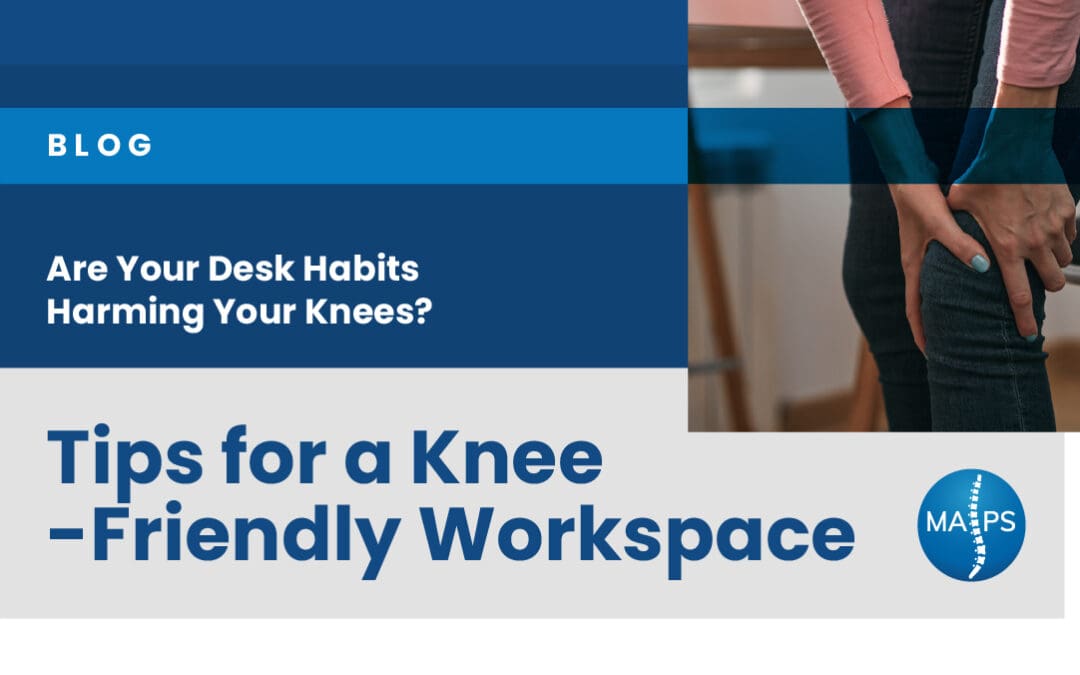Do you have a desk job? If so, you’re not alone. According to a 2021 poll, over 30,000 Americans spend the majority of their workday at a desk. While desk jobs can be convenient, a sedentary lifestyle does have its drawbacks. Prolonged sitting, paired with poor ergonomics (or poor workplace design), can have serious consequences for your knees. In this blog, we’ll share common signs of poor knee health and what to do if you notice them.
Are Your Desk Habits Harming Your Knees?
If your knees feel sore after a day of work, your desk job may be the culprit. Here are some common desk habits that negatively impact the knees:
- Sedentary lifestyle: Remaining seated throughout the day can weaken your knees, leading to stiff muscles and tendons. Prolonged sitting also affects blood circulation, which can cause joint inflammation.
- Poor sitting position: Uncomfortable, poorly designed furniture can force you to sit in a way that’s harmful for your knees. For example, if your chair isn’t adjusted for your height, your knees may be bent in an uncomfortable position.
- Crossed legs: Sitting with your legs crossed for long periods of time can exert pressure on your knees and cause pain and swelling.
Tips for a Knee-Friendly Workspace
If you have a desk job, you can’t avoid sitting down. However, there are steps you can take to help create a more knee-friendly workspace:
- Maintain proper posture: Poor posture can place extra pressure on your knees. Try to sit straight and keep your knees at a 90-degree angle.
- Use adjustable furniture: To keep your knees at a right angle, your feet need to be resting comfortably on the floor. An adjustable chair can help you sit in the right position.
- Use ergonomic accessories: Invest in accessories designed to increase knee comfort in the workplace. For example, you could cushion your feet and adjust your knee height with a footrest, or stay active by using a standing desk.
- Take breaks: Take small breaks throughout the workday to walk, stretch and just get moving. Even minor movements, such as knee bends and stretches, can greatly improve health and circulation.
- Exercise: When you’re not working, engage in low-impact exercises known to boost knee strength. Recommended exercises include leg raises, partial squats and stationary cycling.
If you incorporate these tips and still experience knee pain, you may benefit from professional treatment.
MAPS: Knee Pain Treatment in Chicago
Are you struggling with chronic knee pain? At MAPS, we offer non-surgical treatments designed to deliver long-lasting knee pain relief. Our team is filled with double-board certified, fellowship trained knee pain doctors who specialize in compassionate, patient-centered care. After evaluating your condition, we can create a custom treatment plan tailored to your unique needs. Contact us today to learn more about our services.


